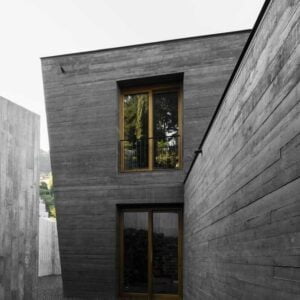In the heart of urban landscapes, where steel and glass dominate the skyline, the use of concrete has become a transformative element in creating urban oases. These serene spaces, designed with innovative techniques, offer a retreat from the bustling city life. This article explores six transformative uses of concrete that have redefined the concept of urban oasis designs.






1. Concrete as a Structural Foundation
A Solid Base
Concrete, with its robust and resilient nature, serves as the backbone of many urban oasis designs. Its ability to withstand various environmental conditions makes it a preferred choice for foundations. Its strength and stability provide a solid base for intricate designs, ensuring that the structures stand tall and firm.
Versatility in Design
The adaptability of concrete allows architects to mold it into various shapes and forms, providing a wide array of design possibilities. This flexibility in design contributes to the creation of unique and aesthetically pleasing urban retreats. From curved walls to textured surfaces, concrete’s versatility opens doors to endless creativity.
Sustainability Factor
Concrete’s durability ensures a long lifespan for structures, reducing the need for frequent repairs or replacements. This contributes to the sustainability of the design, aligning with the growing emphasis on eco-friendly construction. The use of recycled materials in concrete further enhances its sustainable appeal.
Integration with Nature
In urban oasis designs, concrete is often used in harmony with natural elements. Its neutral tones and textures can be seamlessly integrated with greenery, water features, and other natural components, creating a balanced and tranquil environment. This integration fosters a connection with nature, even within urban settings.
Innovation in Construction
Modern construction techniques have allowed for innovative uses of concrete. From precast concrete elements to advanced finishing methods, these innovations contribute to the efficiency and aesthetics of urban oasis designs. The use of new technologies and materials has revolutionized the way concrete is utilized, making it a vital element in modern architecture.






2. Concrete in Landscape Design
Creating Flowing Pathways
Concrete’s malleability allows for the creation of winding pathways that guide visitors through the urban oasis. These pathways can be designed to mimic natural landscapes, providing a sense of escape within the city. The use of colored and textured concrete adds to the visual appeal, enhancing the overall experience.
Water Features Integration
The use of concrete in creating ponds, fountains, and waterfalls adds a soothing element to the urban oasis. Its waterproof nature ensures longevity, while its versatility allows for intricate designs that enhance the overall ambiance. The sound of flowing water, combined with the visual aesthetics of concrete, creates a calming atmosphere.
Sculptural Elements
Concrete’s ability to be sculpted into various forms enables the creation of artistic elements within the landscape. From abstract sculptures to functional seating, these concrete features add a unique touch to the urban retreat. Artists and architects collaborate to craft pieces that reflect the theme and essence of the space.
Sustainable Practices
In landscape design, concrete can be used in sustainable ways, such as permeable paving. This not only adds to the aesthetic appeal but also contributes to environmental conservation by managing stormwater runoff. The use of eco-friendly additives and recycling practices further enhances concrete’s sustainability in landscape design.
Harmony with Nature
The use of concrete in landscape design can be harmonized with natural elements. Whether it’s integrating planters or creating rock-like formations, concrete serves as a bridge between the built environment and nature. The thoughtful placement and design of concrete elements foster a seamless blend with the surrounding landscape, creating a cohesive and pleasing environment.


Concrete, often perceived as a cold and industrial material, has found its place in the creation of urban oases. Through innovative techniques and thoughtful integration with nature, it has transformed urban spaces into serene retreats. The six transformative uses of concrete explored in this article demonstrate its versatility, sustainability, and artistic potential in urban oasis designs. It stands as a testament to human creativity and the endless possibilities of architectural expression. The future of urban oasis design lies in the hands of those who dare to see beyond the conventional and embrace the transformative power of concrete.












